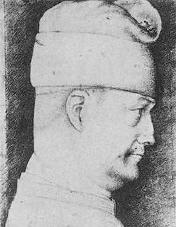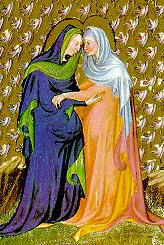 Sitemap |
TrionfiThe Oldest
The Michelino Deck |
| Dating the Deck The deck must have been produced between 1417 - 1425. We favour the date 1424-1425 for special reasons. |
| The Oldest Tarot Cards |
 |
 |
Filippo Maria Visconti, duke of Milano and perhaps the richest man in Italy in the early renaissance, had a fatal disturbance in his youth. His father Giangaleozzo on his way to become king of Italy was poisoned and died, when Filippo was 10 years old. The mother was killed by his elder brother in prison. The dukedom broke in pieces and his cruel brother was assasinated some years later. With the help of his wife Beatrice de Tender, a 20 years older widow of the condottieri Ficino Cane, Filippo as new duke of Milano restored the earlier possessions, but the relation to the much older woman ended in tragedy, Filippo accused her of adultery and she ended beheaded. Filippo became a hard and lonesome man with it ... In 1424/1425 Filippo was at the height of his success. He was very successful at the battlefield and the earlier power of the Milanese dukedom had redeveloped. His mistress was expecting a child, this was a great relief, because Filippo had reason to believe that he could not have children. He prepared a Triumph celebration ("Trionfo") to show his pride and joy in the coming birth. We don't know it for sure, and the following is half a fiction, but ... The Greek Emperor came to a visit in 1424, asking for help against the Osmans, probably that meeting caused an interest in Greek gods at the side of Filippo. He decided to commission a worthful playing card deck and as major motifs were chosen 16 Greek gods. The deck should have appeared at the occasion of the projected Trionfo. In April 1425 the child was born, it was not the wished male heir, only a daughter, Bianca Maria Visconti, who later was involved variously in the production of socalled Trionfi-cards. She stayed the only surviving child. The Trionfo was celebrated in June 1425 ... Time advanced and already in the same year 1425 a war between Venetia and Milan broke out and occupied the militaric energies of the North Italian cities for the next 30 years. In 1453 Constantinople was conquered by the Osmans, the questions for help stayed more or less unheard in all the years. Around the time of the fall of Constantinople the socalled Trionfi cards became a successful game. In 1454 the Italians cities decided for peace. The wonder of the renaissance could take place, printing industry entered and the knowledge in the European world exploded. The Trionfi decks developed and were later called Tarot cards. |





